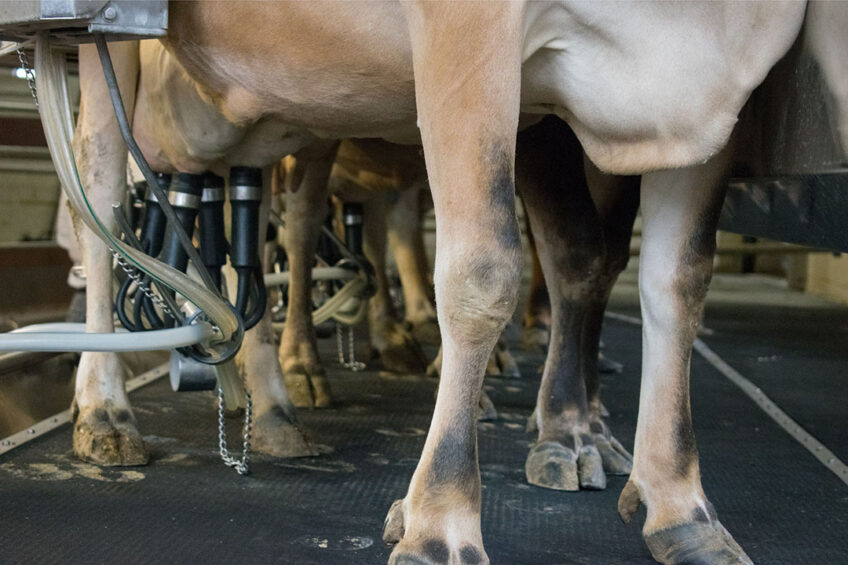Lame cows: Importance of sole thickness in preventing lesions

Research has highlighted the importance of sole thickness in the prevention of lesions in dairy cattle. Foot characteristics have been linked to the development of sole lesions, such as sole haemorrhage, sole ulcers and white line lesions, known as claw horn disruption lesions (CHDL).
Researchers examined the association of claw anatomy and sole temperature with the development of CHDL. They used a cohort of 2,352 cows that were prospectively enrolled from 4 UK farms and assessed at 3 time points: before calving (T1-precalving), immediately post-calving (T2- calving) and in early lactation.
At each time point, body condition score was recorded, a thermography image of each foot was taken for sole temperature measurement, the presence of CHDL was assessed by veterinary surgeons and an ultrasound image was retrospectively taken to measure the digital cushion and sole horn thickness.
Additionally, at the post-calving time point, foot angle and heel depth were recorded. Four multivariable logistic regression models were fit to separately examine the relationship of pre-calving and post-calving explanatory variables with the development of either white line lesions or sole lesions.
Explanatory variables tested included digital cushion thickness, sole horn thickness, sole temperature, foot angle and heel depth. Farm, parity, body condition score and the presence of a lesion at the time of measurement were also included in the models.
Results
A thicker digital cushion shortly after calving was associated with decreased odds of cows developing sole lesions during early lactation (OR: 0.74, 95% Cl: 0.84). No association was found between digital cushion thickness and the development of white line lesions.
Sole temperature post calving was associated with increased odds of the development of sole lesions (OR: 1.03, 95% Cl: 1.02-1.05), and sole temperature before and post calving was associated with the development of white line lesions (T1-Precalving: OR: 1.04, 95% CI: 1.01-1.07; T2-Calving: OR: 0.96 95% CI: 0.93-0.99).
Neither foot angle nor heel depth was associated with the development of either lesion type. However, an increased sole horn thickness after calving reduced the odds of cows developing sole lesions during early lactation (OR: 0.88, 95% CI: 0.83-0.93). This highlights, researchers say, the importance of maintaining adequate sole horn when feet trimming.
Before calving, animals with a lesion at the time of measurement and a thicker sole were more likely to develop a sole lesion (OR: 1.23, 95% CI: 1.09-1.40) compared with those without a sole lesion.
The results suggest that white line and sole lesions may have differing etiopathogenesis. The results also confirm the association between the thickness of the digital cushion and the development of sole lesions, as well as highlighting the association between sole horn thickness and sole lesions. They challenge the potential importance of foot angle and heel depth in the development of CHDL.
The results stem from a £1m research project funded by the Biotechnology and Biological Sciences Research Council, which involves Scotland’s Rural College, the Royal Veterinary College and The University of Liverpool to generate a deep understanding of the reasons dairy cows become lame. The 3-year project concluded in November 2021.
At that time, project leader SRUC’s Professor Georgios Banos described lameness as “one of the most serious and debilitating cow conditions our dairy farmers have to face. In addition to pain and discomfort to the animal, lameness is associated with decreased milk production and inflated farm costs.”
The study was published last month in the Journal of Dairy Science – A prospective cohort study examining the association of claw anatomy and sole temperature with the development of claw horn disruption lesions in dairy cattle – ScienceDirect.
Join 13,000+ subscribers
Subscribe to our newsletter to stay updated about all the need-to-know content in the dairy sector, two times a week.










